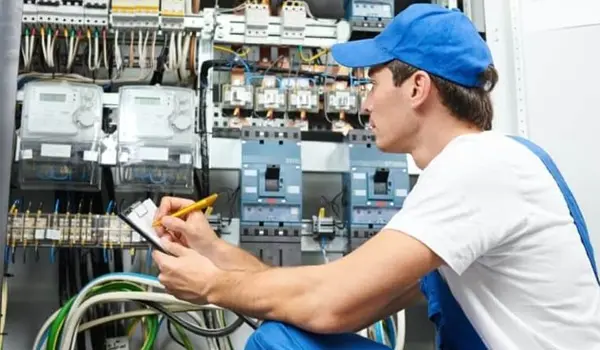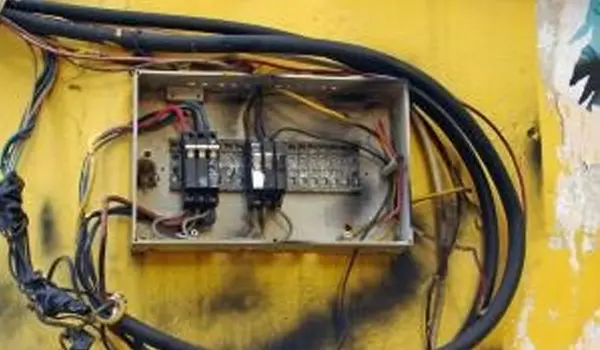An Electrical Inspection Checklist for a Shock-Free Home

Electricity is the blood running through your home’s veins. Almost everything you do at home depends on electricity, and if the electrical systems don’t receive adequate maintenance, they can cause mild or severe threats. With this electrical inspection checklist, you can systematically examine the electrical systems in your house to ensure safety and adherence to standards.
What Is an Electrical Inspection Checklist?
As the name suggests, an electrical checklist lists all of the electrical components of your house. You can use the checklist to examine these components, identify their condition, and decide which needs maintenance or upgrades. The checklist also indicates the order in which you should inspect the electrical components to avoid any damage to you or the electrical systems.
The significance of a checklist for electrical safety is, first and foremost, how it ensures your electrical systems meet the local safety regulations. But it also guarantees your own safety. Plus, there is a certain satisfaction in ticking the items on a checklist.
When was the last time you inspected your home? If you don’t remember, it might be about time to conduct a home maintenance inspection. Click to learn how.
Key Areas to Include in an Electrical Inspection

The following components are listed based on a preferable inspection order. This commercial electrical inspection checklist gives you an idea of where to start the inspection and how to proceed.
1. Main Electrical Service
Start the inspection with the main electrical components. For instance, check the entrance cables and ensure they’re properly connected to the meter base. Then, make sure the meter is properly installed and sealed. You should also find the grounding electrode near the meter. Make sure the connections are firm.
2. Circuit Breakers
Things get a bit technical here. You should check that each circuit breaker is appropriate for the load it serves. For instance, a 20-amp breaker should be used for a 20-amp circuit. If you have a breaker that trips frequently, it might be a sign of overload or a short circuit. Additionally, each circuit breaker must be used for a single circuit. Double-tapping is subject to code violation.
3. Wiring
At first, look for any signs of fray or discoloration in the wires, especially in outdoor areas or any other places where the cables are exposed. If wire insulation wears off, there is a risk of fire. The next thing you should look for is the routing of wires. There shouldn’t be any sharp bends or contact with heat sources on the way.
4. Outlets and Switches
All outlets and switches must be properly secured in the walls. You can test the functionality of outlets using a plug lamp. If the light flashes or if you hear buzzing, this might be a sign of loose splices or damaged outlet. You can also use a voltage tester to check for proper grounding. Likewise, switches should be firm and securely placed in the walls.
5. GFCIs and AFCIs
Ground Fault Circuit Interrupters (GFCIs) are designed to protect against shock, and Arc Fault Circuit Interrupters (AFCIs) to prevent fire. You should observe these systems for warning signs and use the manufacturer’s instructions for specific testing procedures. You might want to consult a professional to test GFCIs and AFCIs. If you’re thinking about having the electrical systems inspected, you might want to know about the electrical inspection cost.
6. Panel Labeling
Each circuit should be legibly labelled (e.g., "Kitchen," "Living Room," "Outlets") so that you can cut off the current in the desired circuit without disturbing other areas in your home. If the labels are missing or illegible, consider adding new ones.
7. Kitchen Circuits
The kitchen is where most high-power appliances, such as the refrigerator, oven, and microwave, are placed. Each of these appliances should be connected to dedicated circuits to avoid overload and breaker tripping. Also, ensure that these appliances are not plugged into the same outlet. Click on kitchen home inspection to learn more details about the kitchen's optimal condition.
8. General Safety Check
If you’re using an extension cord, make sure to place it in a place where there is less chance you trip over it and don’t overload it by connecting too many appliances to it. Also, the cord shouldn’t be under pressure or stretched.
If you own a space heater, make sure it’s plugged into a dedicated outlet because it consumes too much power and might result in overload and breaker trips.
Finally, if, for any reason, any of the electric systems catch fire, you must shut off the power at the main panel (if possible) and use a Class-C fire extinguisher to put out the fire. Using water for such incidents increases the risk of electrocution and even spreads the fire more.
Does a newly constructed house need inspection? Click on new construction home inspection to find out.
Common Electrical Hazards Identified During Inspections

You may encounter numerous flaws in an electrical inspection, but the following are more common. The information can help you gather the necessary tools and equipment for safe and precise examination. Plus, you’ll know what can go wrong, so be extra careful when dealing with these issues.
- Faulty wiring: the insulation on wires can get damaged over time, or the splices might loosen.
- Overloaded circuits: when there is an overload on a single circuit as a result of plugging multiple appliances into a single outlet, the circuit can overheat and potentially cause fire.
- Defective outlets and switches: loose outlet connections can cause electrical shocks.
- Moisture exposure: the metallic components of electric outlets or switches in areas such as the bathroom or the kitchen might be corroded and lead to inconsistent electric current. You might also find other issues in a laundry room inspection.
- Overheating components: if a piece of wire, an outlet, or a switch is overheated, this might be a sign of loose connections or overloading.
Conclusion
The functionality of your home and the level of safety and convenience of living in it significantly depends on the electrical systems. You should regularly inspect the electrical components to avoid costly repairs or devastating disasters like fire. Cables, outlets, and switches are more high maintenance compared to other electric components. The home inspection electrical checklist above can help you plan an electrical examination. Lastly, don’t forget to prepare appropriate tools and take safety precautions to avoid potential hazards.
- In this post:
- What Is an Electrical Inspection Checklist?
- Key Areas to Include in an Electrical Inspection
- Common Electrical Hazards Identified During Inspections
- Conclusion



